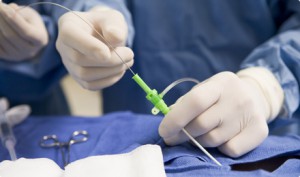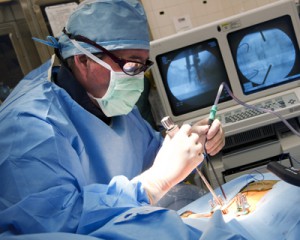Chemoembolization is a minimally invasive treatment for liver cancer. Under this therapy, the maximum dose of chemotherapy is given to tumor cells and the toxic effect of chemotherapy is minimal. Thousands of patients in India who are diagnosed with life-threatening diseases like spinal tumor; liver, lung or prostate cancer, stroke and uterine fibroids often require painful invasive surgeries and chemotherapy as part of their treatment.

Interventional Radiology is a sub-specialty of radiology and utilizes minimally-invasive therapy to diagnose and treat diseases in almost all organs, usually as an alternative to traditional open surgery. The practice is a rapidly growing area of medicine for treating a wide variety of disorders and diseases and is playing a role in developing new techniques that may improve cancer treatment, including the use of magnetic particles to draw cancer-killing agents into tumours; and the delivery of genetic material, called gene therapy, to fight or prevent cancers.It is also used to treat blockages inside arteries and veins, to block off blood vessels that nourish tumors, destroy malignant tumors using focused heat and freezing, drain blocked organ systems such as the liver, gallbladder and kidney and perform biopsies that would otherwise require surgical exploration.
These are generally easier for the patient because it involves no incisions, carries less risk, causes minimum pain, is very cost effective and usually has shorter recovery times.Stating that there has 
Since then, the ability of interventional radiology techniques to treat an ever-expanding list of conditions continues to grow. Similar to Interventional Radiology, Interventional Neuroradiology (neurology), used in diagnosing and treating serious diseases related to the head, neck and spine is also becoming a popular practice in the country. It also avoids long term damage that may occur during open surgeries and is highly cost-effective too.
Every year, over 1,000 patients – the highest in north India – undergo treatment through this procedure at the institute. The trend is also gaining recognition in other major cities across India.
To know more about Liver Cancer in India please visit this link : https://safemedtrip.com/medical-services/cancer-treatment-in-india/liver-cancer-treatment-in-india.html

 Click to WhatsApp
Click to WhatsApp +91-9899993637
+91-9899993637



